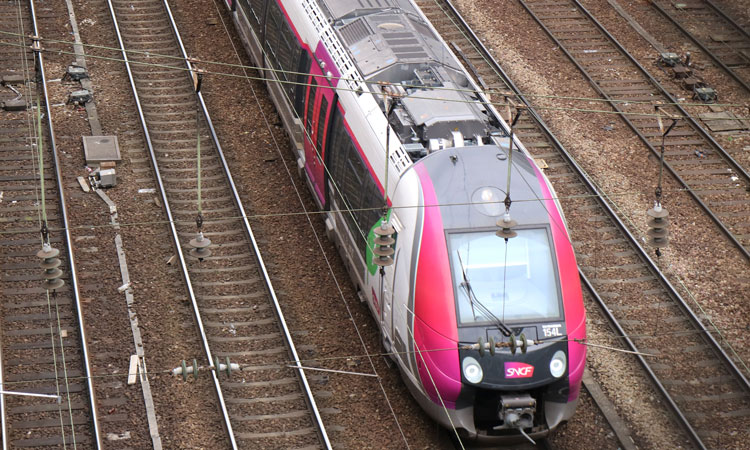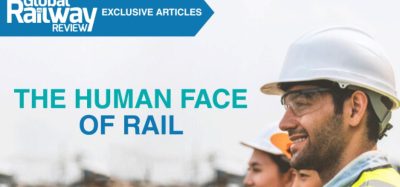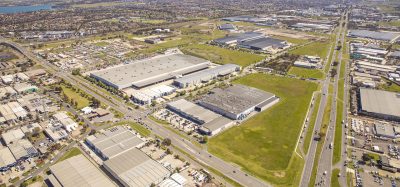Perpetual change: Improving rail service adaptability, responsiveness and efficiency
Posted: 26 June 2020 | Alexandre Savard | No comments yet
In an interview with Global Railway Review, Alexandre Savard, Director – Business Development, Rail & Integrated Mobility at GIRO, explains how integrated resource planning and management can improve rail service adaptability, responsiveness and efficiency.


What is GIRO’s perspective on the current COVID-19 crisis and on what is yet to come?
The COVID-19 crisis has sent shock waves across the global transportation industry, revealing not only the importance of public and rail transport, but also certain elements of fragility. GIRO supports over 300 public transport and rail operations in 27 countries, so we are exchanging perspectives with many stakeholders on the crisis and the post-COVID-19 outlook. All of them have been affected by the situation, but their response strategies differ depending on how the pandemic has evolved from one country to the next. This can range from maintaining only a minimum level of service to an almost full return to normal operations, but with additional measures. In a recent survey of our clients, we found that operators are tackling this crisis with resilience and cautious optimism. That being said, some lasting changes may need to be made to the way services are planned and operated. There will certainly be a pre- and post-COVID-19 era for planning and operating public transport and passenger rail. I believe that, despite the sweeping impacts of our current crises, it’s an opportunity to improve some practices and even rethink them for the future.
What have been the biggest changes that rail operators have faced in the 40 years that GIRO has been supporting them?
More than ever, passenger rail must adapt to changing circumstances, whether it’s huge swings in demand, rising infrastructure and equipment maintenance, or more responsive staff management. The current crisis is yet another clear example of this growing need for adaptability that has been a recurring theme for decades.
The rail industry is subject to strict rules, particularly when it comes to safety and operating procedures. Due to the sheer scope of equipment and infrastructures, rail has long been labelled as inflexible and sluggish to change. Yet, the immense efforts of rail operators in recent events have shown the opposite to be true. More than ever, passenger rail must adapt to changing circumstances, whether it’s huge swings in demand, rising infrastructure and equipment maintenance, or more responsive staff management. The current crisis is yet another clear example of this growing need for adaptability that has been a recurring theme for decades. As competition opens up in rail in various regions across the globe – such as in France, recently – operators will need to reinvent themselves. This may include taking a closer look at their planning and operating tools and procedures.
How has GIRO had to adapt to meet the changing needs of rail operators?
R&D has been at the heart of GIRO’s activities for the last 40 years. We invest more than 30 per cent of our resources in meeting industry challenges; specifically, by developing resource planning and management software solutions built on globally recognised optimisation algorithms. In recent years, GIRO has significantly boosted its R&D efforts in passenger rail to better meet the increasingly complex task of achieving efficient service planning and operations. Most notably, we have greatly enhanced the functionality of our HASTUS software to improve train schedule planning. This has allowed rail operators to design services with even more robust, responsive and efficient resource management. These innovations are in addition to the already recognised functionalities of GIRO’s solutions, such as staff scheduling and management.
How can rail operators benefit from integrated resource planning?
Most rail operators face similar challenges, such as breaking down silos and optimising the management of existing material and human resources. Historically, rail resource planning has been broken up by phase (studies, long- and short-term planning, operations etc.) and by resource type (infrastructure, rolling stock, on-board staff, station staff and so on). For example, one group will study demand and service levels (or respond to operations tenders), a second will handle train planning and still another will plan shifts for on-board and operations support staff. This division is not inherently bad, but it can introduce cumbersome processes and errors at each stage.
The steady rise in traffic and infrastructure maintenance in recent years means that operators must modify their transport plans more frequently – sometimes even on a daily basis.
You also need to consider that rail transport plans are often drawn up yearly, so changes need to be made with great attention to detail. Given the interdependency of resources, any changes made to timetables (or paths allocated by the infrastructure manager) can lead to changes in train schedules, which in turn can impact the duties of assigned employees. It’s easy to appreciate the massive challenge this presents to operators trying to deliver acceptable service levels. This challenge becomes even greater when services need to be frequently changed, such as when infrastructure work is being carried out or during increased maintenance on rolling stock. The steady rise in traffic and infrastructure maintenance in recent years means that operators must modify their transport plans more frequently – sometimes even on a daily basis.
GIRO strongly believes that the integrated planning and management of resources right up to the operating day is key to meeting this challenge. While it takes a wide range of expertise to ensure complete coverage, GIRO provides operators with a fully integrated software environment for designing, optimising, adapting and operating their service, while also taking into account in real time the inter-relationships of resources and the industry’s strict constraints. This is a paradigm shift for many rail operators, who often use multiple tools and teams to manage these resources.
GIRO has a broad collaboration with SNCF. How did that come about?
Even though GIRO supports more than 100 rail operations around the world, our recent collaboration with SNCF has been a key milestone in our strategy. Our collaboration with SNCF began in 2017, when we responded to an international call for tenders which included a formal demonstration of our tool’s capabilities and a comprehensive comparative analysis. Following this process, GIRO was selected by SNCF to implement our HASTUS solution for the planning and operations of SNCF’s trains and staff.


GIRO’s HASTUS software is being implemented on all three SNCF’s passenger rail networks, such as Transilien (RER).
HASTUS is now being implemented on SNCF’s three passenger rail networks: Transilien urban rail in and around Paris, the TER regional trains and the national high-speed INOUI (TGV) network. SNCF is hoping to achieve key strategic goals through this modernisation: To adopt a more integrated planning and operating structure; to increase the speed at which it can adapt its offer; and to optimise efficiency so that it can remain competitive in a market recently opened to competition. It’s hoping to achieve all this amid the extensive modernisation of rail infrastructures with over 1,600 worksites creating short-, medium- and long-term impacts on transport plans.
These are some of the largest implementations of HASTUS software globally to date. Eventually, HASTUS will plan and manage the service of more than 4,000 trainsets, close to 20,000 on-board crew and nearly 30,000 station staff. These technically complex implementations are hosted in the cloud and must be closely integrated with the existing IT ecosystem. Several components of these GIRO solutions are already in production, thanks to agile projects and the concerted efforts of SNCF, GIRO and our partner team working on these complex projects.
What lessons have been learned so far from this collaboration with SNCF?
If there is one key lesson that we can take away from our partnership to date with SNCF, it’s that rail operators, as complex and large as they may be, see the benefits of integrated resource management and are able to commit to a modernisation of their tools and practices. They recognise that an integrated approach to resource management will allow them to improve their quality of services by making them more efficient and flexible. The powerful solutions now available on the market allow operators to break down silos and remain focused on their primary mission – all while taking into account the vast complexity and constraints of the rail sector. Modernising resource planning and management processes and tools in a complex environment such as SNCF is a challenging task, and commitment from all stakeholders is a key factor of success.
As the rail industry continues to change, how will GIRO keep pace?
More than ever, rail operators will need to be flexible and efficient in how they plan and deliver their service.
Despite the current global crisis, the rail industry is known for its resilience and long-term vision. Most likely, it will introduce lasting changes to meet the new needs of travellers and ensure their safety. More than ever, rail operators will need to be flexible and efficient in how they plan and deliver their service. The industry’s ability to face current and future challenges will be fundamental if it is to remain the backbone of mobility. We will be closely monitoring these challenges and ready to offer innovative planning and operations solutions capable of tackling not only today’s challenges, but also those to come.


Related topics
Operational Performance, Passenger Experience/Satisfaction, Technology & Software, The Workforce








